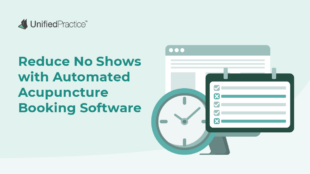Acupuncture is becoming increasingly popular among practitioners and patients alike, and it’s no wonder why. As an ancient Chinese practice, acupuncture has been used for centuries to treat a variety of ailments including pain relief, inflammation, and stress management. However, with the rising demand for acupuncture services come several new challenges. One of the biggest challenges is how to effectively manage an acupuncture practice. To help you optimize your acupuncture practice, here are 6 essential elements of an effective acupuncture management system that will ensure you provide quality care while maintaining a profitable business.
1. Patient Management
Managing patient information is a critical component of running an effective acupuncture practice. As an acupuncture practitioner, you must be able to access and update patient information including medical history, visit notes, and insurance details quickly and accurately. Utilizing a comprehensive patient management system will ensure that all relevant data is easily accessible in one place and updated in real-time, so you can provide quality care to your patients while also streamlining your own workflow.
2. Scheduling & Appointment Management
Appointment reminders and automated check-ins are essential for success. Your acupuncture management system should have built-in reports and analytics tools so you can track key performance metrics such as no-shows or wait times, which will help identify any areas of improvement needed.
3. Billing & Payment Management
Accurate billing and payment management is essential for any profitable business, and this applies to acupuncture practices too! Having a streamlined billing process in place helps ensure that payments are collected on time from patients as well as adhering to various regulations and billing codes associated with insurance companies or other third parties involved in the process. Unified Practice has its own integrated credit card processing system!
4. Inventory Management
Proper inventory management is crucial for reducing costs associated with wasted supplies or ordering more than necessary due to inaccurate inventory tracking. Your acupuncture management system should include features such as reorder notifications for supplies used in treatments or stocked at clinics, quick item look-ups, barcode scanning capabilities, and more so you can efficiently manage all aspects of your clinic’s inventory needs. Unified Practice is designed to handle the complexities of managing a Modern Chinese Pharmacy!
5. Reporting & Analytics
Reports and analytics are invaluable when it comes to identifying opportunities for growth within your practice. With built-in reporting tools within an acupuncture management system, you’ll be able to better understand how your clinic is performing on key performance metrics such as revenue growth, customer retention rate, number of new customers recruited etc.
6. Mobile App
Offering online booking through mobile apps allows patients greater flexibility when scheduling appointments since they don’t have to call in or send emails back and forth with their practitioner over availability. Furthermore, most mobile apps offer built-in reminders before each appointment which increases customer satisfaction rates since they don’t forget their appointment date/time leading up to their visit.
Ultimately, these 6 elements constitute a comprehensive yet user-friendly acupuncture management system that can help maximize patient care while maintaining profitability within any successful practice!
Our team at Unified Practice takes pride in harnessing these features, and more! Start reaping the benefits of our integrated Acupuncture and Herbal Medicine practice management software and EHR platform, sign up today.




